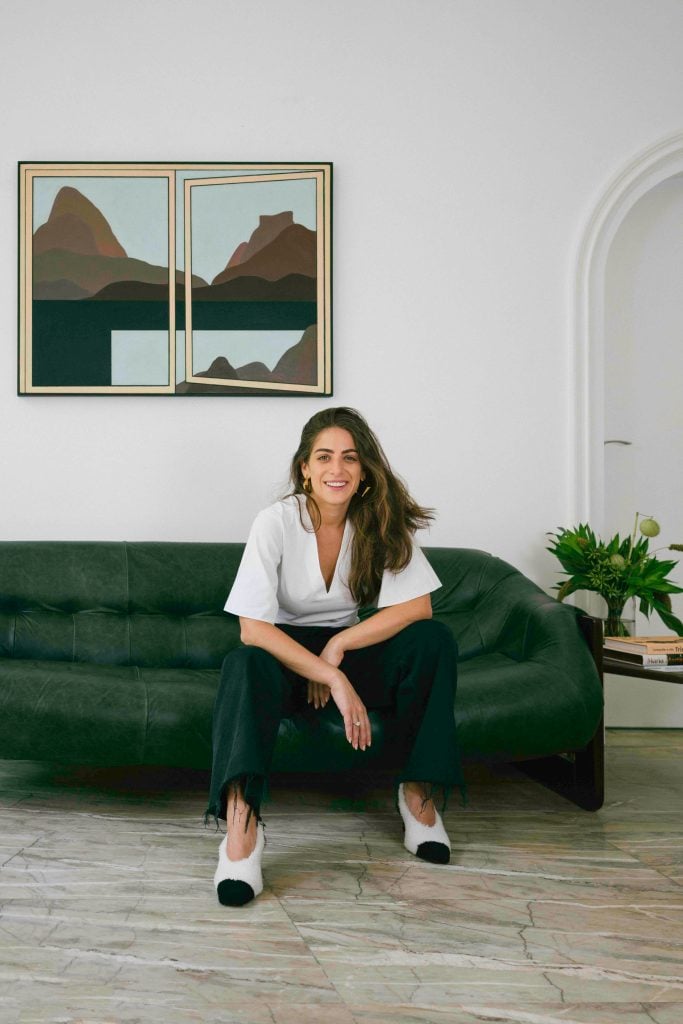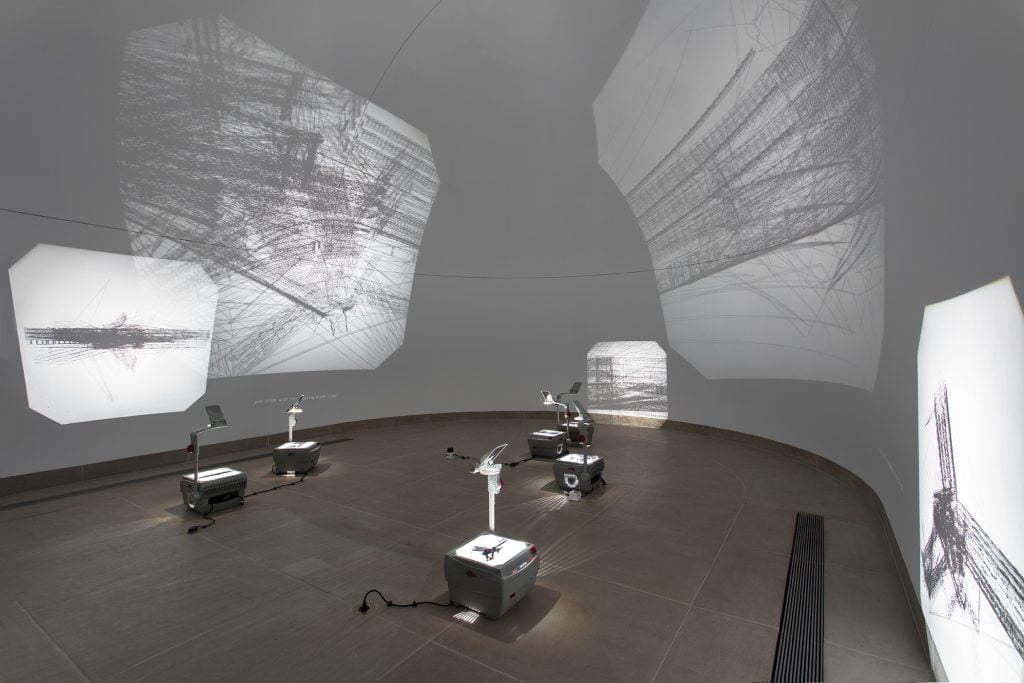Art Collectors
What I Buy and Why: Brazilian Art Advisor Camila Yunes Guarita Can Be an Impulse Buyer, But She Has No Regrets
We caught up with the collector at her home in São Paulo.

We caught up with the collector at her home in São Paulo.

Artnet News

When Camila Yunes Guarita has her art advisor hat on, she makes careful, studied purchases. But when buying for herself, her gut often takes over.
Yunes Guarita has been immersed in art collecting from a young age. Her mother, Bia, is also an important collector as well as the director of the Ivani and Jorge Yunes Collection, which was founded by Camila’s grandfather, who was one of the biggest collectors in Brazil.
Yunes Guarita began her art career in the gallery world, having held roles at Galleria Continua, Nara Roesler, and Galerie Aveline before she turned to advising. Today, she is the founder and director of Kura, an advisory based in São Paulo whose stated goal is to “demystify the art world by promoting dialogues and partnerships between different market players.”
The company adapts to meet the demands of Brazil’s cultural scene, offering advisory services to collectors, cataloging private collections, managing the careers of emerging artists, and carrying out special curatorial projects.
When she’s not at home in São Paulo, Yunes Guarita is often traveling the world as VIP representative for Arco Madrid and Arco Lisboa. She recently stopped to speak with Artnet News about her collecting milestones as well as her deep-set desire to run away with James Turrell’s Roden Crater.

Lenora de Barros, Pregação(2014). Photo by Lauren Pascarelli 2014. NY Pioneer Works (ICCO). Courtesy of the artist.
What was your first purchase (and how much did you pay for it)?
I want to mention the work Pregação by Brazilian artist Lenora de Barros; she will be participating in the Venice Biennale main exhibition this year. Although it’s not precisely my first purchase, it is a milestone for my career as an advisor and, of course, as a contemporary art collector.
The picture is a record of a performance that took place in NYC in 2014. On it, we’re able to read the word “silence”. The gesture of trying to find silence within chaos made a lot of sense to me at that time. It’s a piece that still resonates everyday with me. I cannot recall how much I paid for it, but it was not that expensive. However, I do remember having to ask the gallery to pay for it in a few installments.
What was your most recent purchase?
I’ll have to admit that sometimes, I can be a bit of an impulsive buyer. And that is the reason why I’ll mention three of my favorite and most recently acquired pieces.
The first one is a painting by Wanda Pimentel from 1987. It is part of a series titled “Janelas do Rio,” which presents three iconic mountains (Dois irmãos, Gávea, and Pedra Bonita) that hack into the city’s landscape. I have a very strong relationship with Rio. So, I thought this could be my very own window to the city. Besides Wanda being this extraordinary artist, this piece was produced around the period that the military dictatorial government was about to end in Brazil. Therefore, it is also a window to freedom.
The second work is a painting by young Danish artist, Victor Bengtsson, who recently had a solo show mapping relationships between Nordic mythology, bodily fluids, and mental states.
Jaider Esbell, who has unfortunately passed away very recently, had a short but meteoric career. More than being an artist, he was responsible for the substantial presence of indigenous contemporary art at the latest edition of the São Paulo Biennial. His work was imbued [with] his spiritual practices, during which he used the Jenipapo plant as a medium to connect with his ancestors. Esbell´s drawings are the result of his mystical experiences.
Which works or artists are you hoping to add to your collection this year?
I have my eye on an installation from the “Eu, Mestiço” series by Jonathas de Andrade, the artist who will be representing Brazil at this year’s Venice Biennale. Also, I’ve fallen in love with Michael Armitage’s paintings. I would love to have this specific one I saw at “Ubuntu, a Lucid Dream,” a group show at Palais de Tokyo. It’s called #mydressmychoice and it’s from 2015. Finally, on my wishlist there is also a Net-Grid by Mandy El-Sayegh.

Lydia Okumura. Courtesy Camila Yunes Guarita.
What is the most expensive work of art that you own?
I think one of the most valuable pieces in my collection is a Joseph Kosuth. The first time I saw his work, it was at MoMA: One and Three Chairs (1965). At that moment, I knew I wanted one.
When I started my collection, I was drawn towards shapes, structures, and words. So, this piece was very meaningful. Nowadays, I find myself very much attracted to figurative and political art.
Where do you buy art most frequently?
During these past years, I’ve built strong connections in the art world. I think these relationships are essential when it comes to building a meaningful collection, both for myself and for my clients. I mostly buy from galleries, auction houses, and, at times, directly from collectors and artists. During art fairs, I focus 100 percent on my clients. And when I am at the office, I do a lot of research and reading.
Is there a work you regret purchasing?
None. All of them have had a very strong impression on me at the time of the purchase, and I always try and study a lot before buying a piece.
What work do you have hanging above your sofa? What about in your bathroom?
Above my sofa is a Lydia Okumura installation. She is a Brazilian artist with Japanese ancestry. She has lived in NYC for a long time and investigates space and forms. In 1971, she founded the São Paulo art collective Equipe3, together with Francisco Iñarra and Genilson Soares.
In my bathroom I have photos by Alair Gomes, an artist with a very sensual and beautiful approach to the body.

Lawrence Abu Hamdan, Saydnaya (ray traces) (2018) at the Hammer Museum, Los Angeles. Photo by Brian Forrest, courtesy of the artist and mor charpentier.
What is the most impractical work of art you own?
A Lawrence Abu Hamdan, whose projection is very hard to display, but I’ve managed to arrange space in my house to fit it in. I always find a way of making them practical!
What work do you wish you had bought when you had the chance?
Rota do tabaco (2016), a work from Brazilian artist Dalton Paula. The piece was displayed at the 32nd São Paulo Biennial.
If you could steal one work of art without getting caught, what would it be?
That’s a tough one, because I would love to have the Roden Crater by James Turrell. [It is] transcendental. It talks about time, light, spirituality. But let’s say it would be impossible to steal [that]: Then, it would be Henri Matisse, Dance (I), from MoMA.